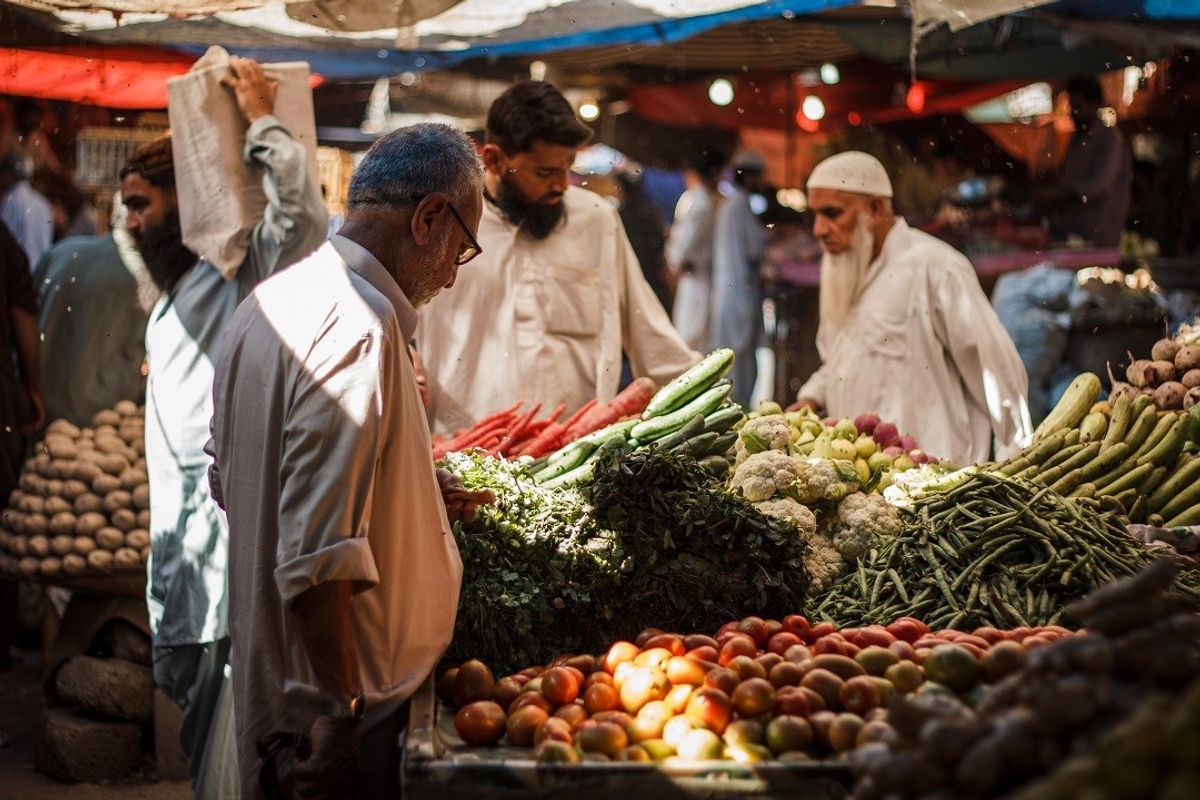Pakistan inflation likely to fall to 5.6% in September
Core inflation, which excludes food and energy, is expected to come in at 7.5%
Business Desk
The Business Desk tracks economic trends, market movements, and business developments, offering analysis of both local and global financial news.

Pakistan’s inflation rate is projected to ease to 5.6% in September, down from 6.9% in the same month last year, signaling a continued moderation in overall price pressures.
However, a sharp month-on-month rise driven by food price hikes has raised concerns over short-term inflation risks.
Inflation numbers are likely to be released on October 1.
According to reports of Ismail Iqbal Securities and Insight Securities, prices are expected to increase 2.1% in September compared to August, reversing a 0.65% decline recorded the previous month.
The uptick is largely attributed to seasonal increases in wheat, tomato, and onion prices, pushing overall food inflation up by an estimated 4.7% month-on-month.
Early signs of supply disruptions caused by late-monsoon floods in Punjab and Khyber Pakhtunkhwa are also beginning to affect perishable food markets, particularly vegetables.
These disruptions have added short-term inflationary pressure and raised fears about the persistence of food-related price shocks in the coming months.
Core inflation — which excludes food and energy — is expected to come in at 7.5%, significantly lower than 10.4% recorded in the same period last year.
The decline is attributed to a high base effect and improved price stability in recent quarters. Urban core inflation is estimated at 7.2%, while rural core inflation stands slightly higher at 7.8%, driven by infrastructure damage and elevated transportation costs in flood-affected districts.
Despite the inflationary risks, energy prices have remained largely stable on a year-over-year basis.
However, analysts warn that further supply chain disruptions could lead to a pass-through from rising food prices into non-food categories if conditions persist into October.
In its most recent Monetary Policy Committee (MPC) meeting, the State Bank of Pakistan left the key policy rate unchanged, citing resilient economic activity supported by improving industrial output and recovering business sentiment.
However, the central bank acknowledged that the near-term macroeconomic outlook has softened due to the widespread impact of recent flooding, which poses risks to inflation and the external balance.
“Damage to standing cotton and rice crops and disruptions to rural logistics could increase headline inflation and widen the current account deficit through higher food imports,” the central bank said in its post-meeting statement.
It added that the speed of post-flood rehabilitation would be crucial in determining whether these price shocks prove transitory.
Data from the Sensitive Price Index (SPI) highlighted sharp increases in key food items in September. Tomatoes rose by 96.6%, wheat flour by 36.9%, onions by 34.2%, fresh vegetables by 5.6%, and potatoes by 5.4%. In contrast, prices of fresh fruits fell by 10.1%, chicken by 2.6%, and motor fuel by 1.4%.
Month-on-month inflation is estimated at around 2.0%, compared to 3.0% in August. Food prices rose by approximately 5.2%, but the impact was partially offset by favorable fuel cost adjustments and lower utility prices under the Fuel Cost Adjustment (FCA) mechanism.
With the next MPC meeting scheduled for next month, analysts expect the central bank to maintain the current policy stance to continue with the cautious approach despite flood losses being less severe than the catastrophic flooding in 2022.
“With rising credit offtake and improving high-frequency indicators, the effects of earlier policy rate cuts are beginning to filter through the economy,” said one analyst. “However, import growth and flood-related inflation risks continue to pose challenges.”
Preserving macroeconomic stability and keeping the current account deficit below 1% of GDP remain key policy goals, officials said, emphasizing that while external support may aid growth, consolidation of recent stabilization gains must take priority.










Comments
See what people are discussing